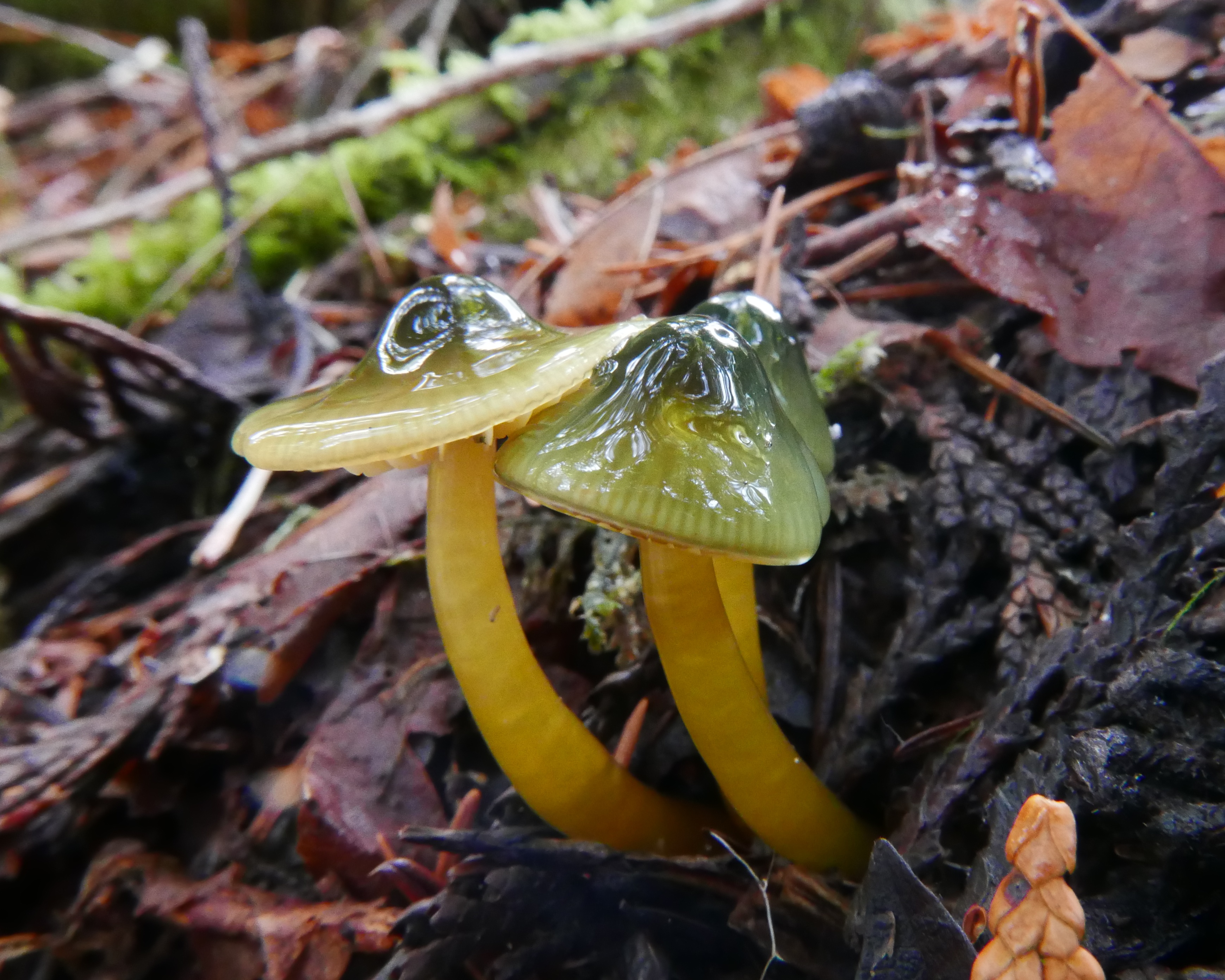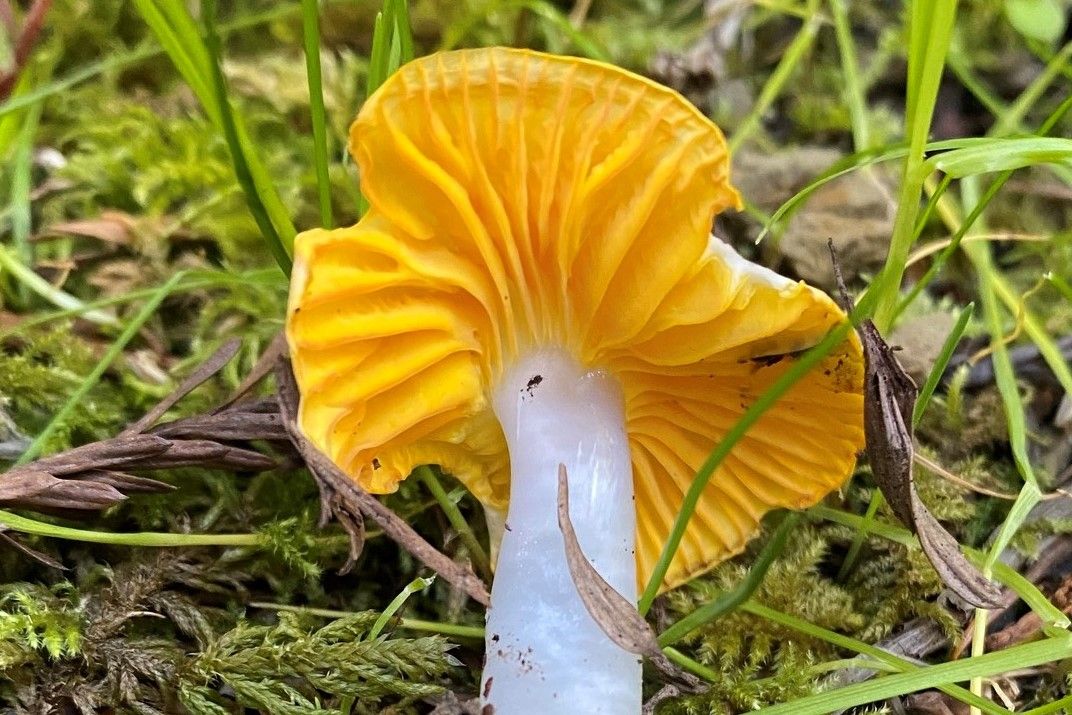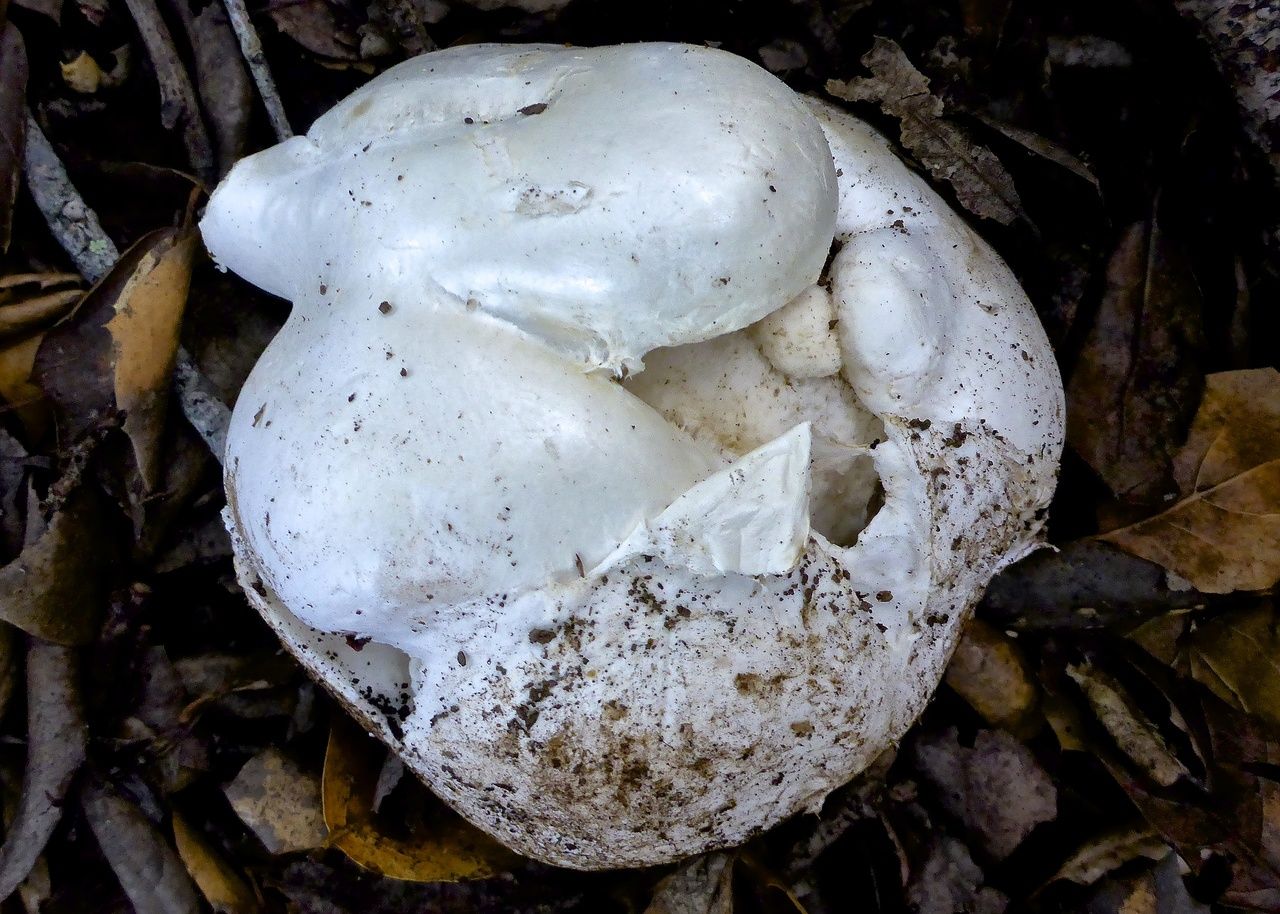
Hygrocybe flavifolia, the aptly named Golden-gilled Waxy Cap, boasts a glossy sheen and ranges in color from the bright yellow of a midday sun to the deep golden hue of a late summer afternoon. Hygrocybe flavifolia is on the FUNDIS West Coast Rare Fungi Challenge list, and this stunning sunny specimen was discovered earlier this month by Chris Dietel (iNat ID: 201535167) on his property in the Santa Cruz Mountains of California.
⛰️Chris is retired and has been interested in identifying and photographing fungi and myxomycetes for the last five years. He mostly concentrates his efforts in the Santa Cruz Mountains.
🌲Chris tells the story of his encounter with the Golden-gilled Waxy Cap here: “I spotted a solitary Hygrocybe flavifolia last year [March 2023] under Bay and Douglas fir in my neighborhood above Los Gatos [elevation 1700 feet], so I was keeping a keen eye for them this year. Interestingly, I found three fruitbodies this month in a different location roughly 100 meters away from last year’s find.”
🗺️ Initially discovered in 1942, there are now only 56 observations of Hygrocybe flavifolia on iNaturalist. While coastal California appears to be a haven for Hygrocybe flavifolia, a lone sighting in Olympia, Washington hints at its broader geographic range.
💡This natural-LED, illuminating the forest floor, is facing growing threats from widespread logging and drought, exacerbated by climate change. Classified as endangered on the IUCN Red List, the need to document and understand Hygrocybe flavifolia is of the utmost importance.
🍄 The story of this particular Golden Gill Waxy Cap specimen, told by Chris, highlights the critical role of micro-ecosystems in supporting the growth and development of rare fungi. If you ever find a rare fungal species, please be like Chris and note the geolocation to revisit next year! Each collection expands the FUNDIS database, offering a more comprehensive picture of the intricate world thriving beneath our feet.
Our work in California is funded by the California Institute for Biodiversity. Find them at CalAlive.org!

Our work on the Golden Gilled Waxy Cap is funded by the Mohamed bin Zayed Species Conservation Fund.








.jpg)

